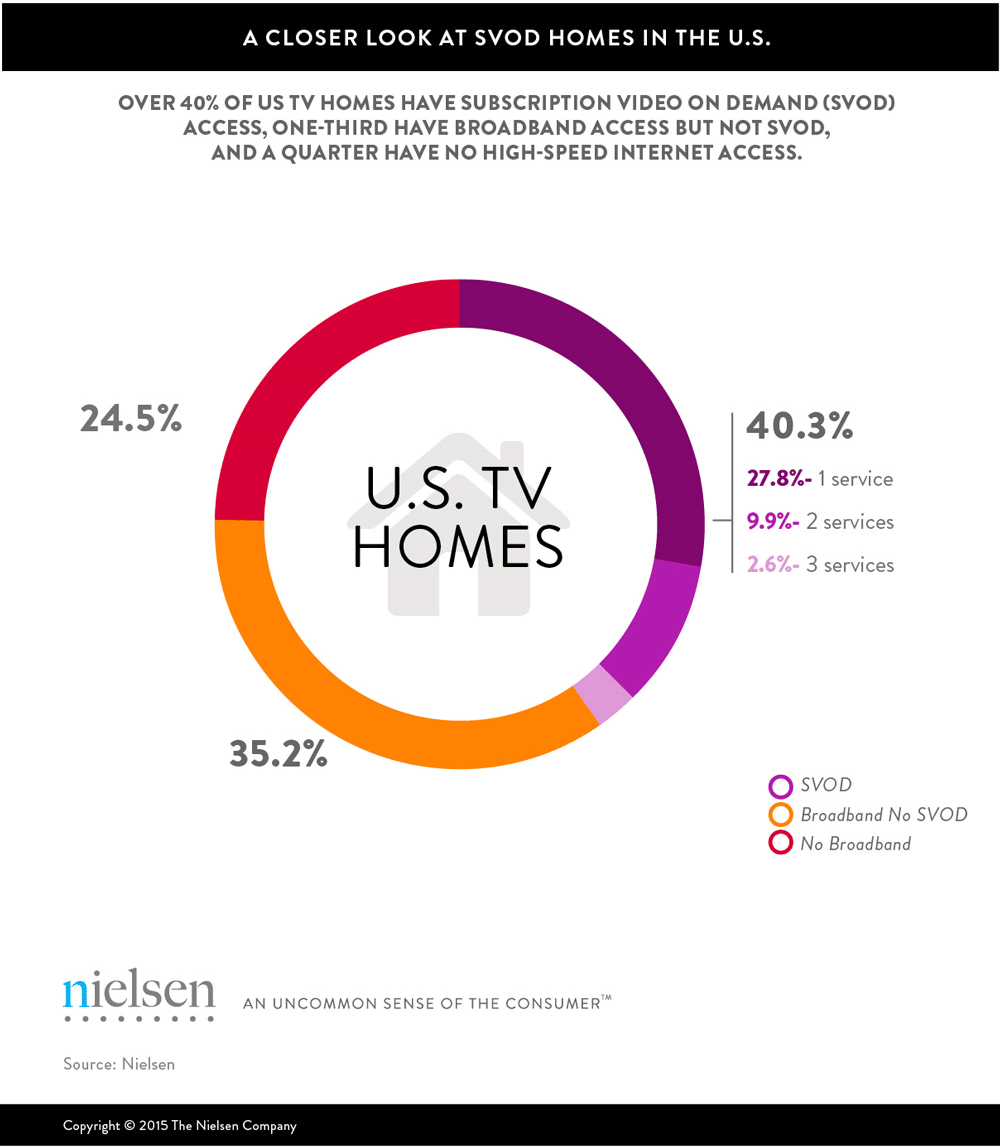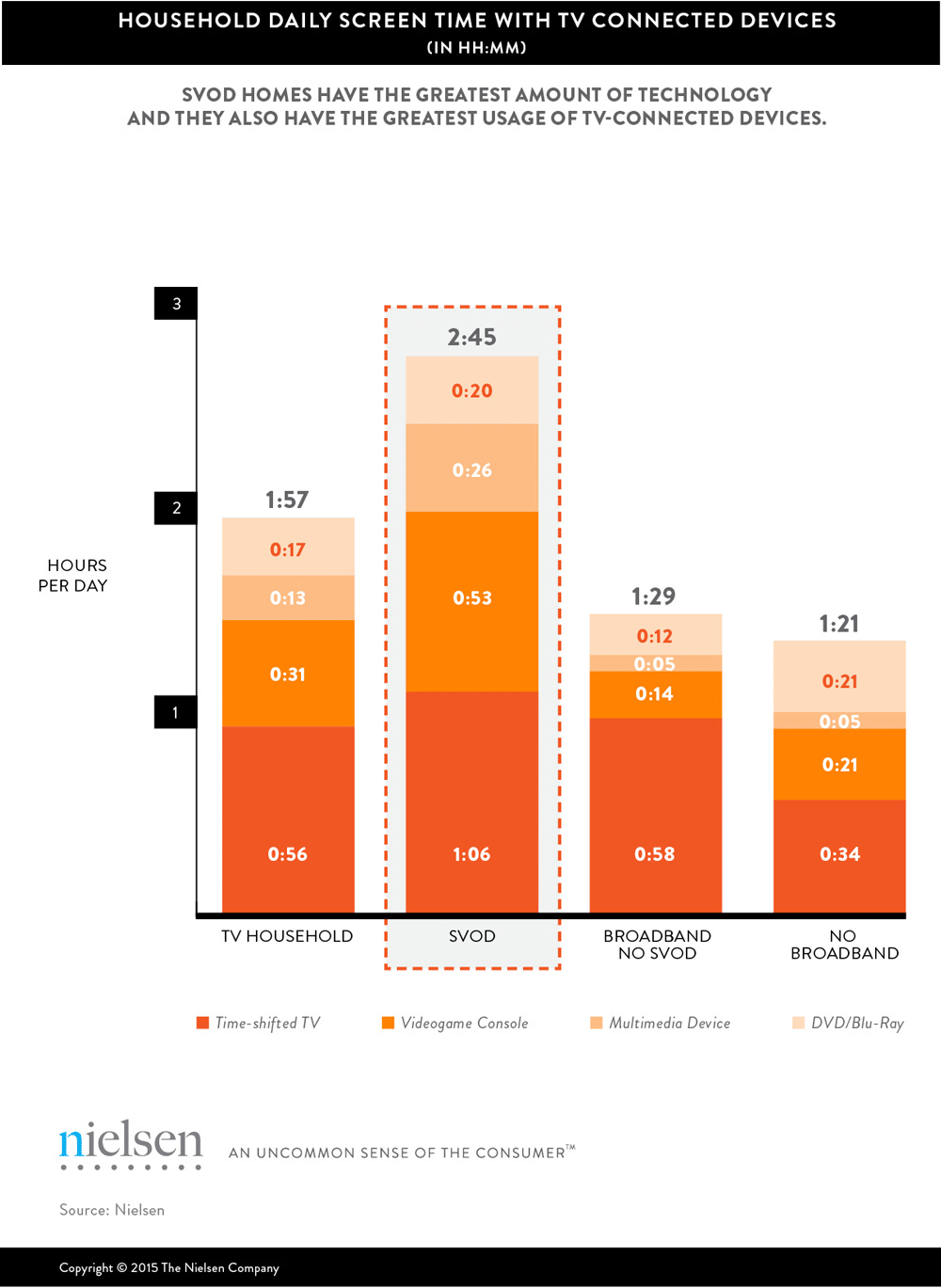As the U.S. economy perseveres from recession to potential resurgence, consumers continue to power a growth in subscription-based video on-demand (SVOD) services. And who knows, maybe the extra money lining viewers’ pockets is actually helping fuel the steady consumer adoption of these services.
According to Nielsen’s most recent Total Audience Report, 41% of U.S. homes had access to an SVOD service in fourth-quarter 2014.
In terms of race and ethnicity, the multicultural makeup of in SVOD homes is different from other types of homes. For instance, among homes with SVOD, 71% of them are white, 12% are Hispanic, 10% are black and 5% are Asian-American. However, that distribution is quite different in homes with no broadband: 56% of homes are white, 18% are Hispanic, 22% are black and only 2% are Asian-American.

But money talks—or at least it lets consumers connect with original programming whose characters are doing the talking outside of the linear TV screen. The report found that penetration of both high-speed Internet and SVOD access are strongly income-related. In fact, about 13% of homes boast multiple streaming services in their homes and nearly half of homes with SVOD access have a yearly household income of more than $75,000, while two-thirds of homes without broadband access have annual household incomes of less than $40,000.
It’s not an “all SVOD” or nothing proposition to homes with these services, however. Actually, it’s quite the contrary.
“When looking at how homes with access to subscription-based streaming services compare to a typical TV home, homes with broadband and no SVOD—and even homes with no broadband at all—we see that SVOD homes really go ‘all in’ in terms of the devices that they are using through their traditional televisions,” said Dounia Turrill, SVP Insights, Nielsen. “From DVRs to video game console usage, these homes—perhaps because of their income level—both adopt and rely on these devices at a much higher rate. Technology begets technology,” Turrill added.
The report found that homes with subscription streaming services have a both a penchant for TV-connected technology and, perhaps more importantly, display the greatest usage of these devices—nearly 50 minutes more a day than a typical TV home. Additionally, these homes average 10 more minutes daily watching time-shifted TV and double that in terms of time spent using a multimedia device (such as Apple TV and Roku) than a typical TV home.

Methodology
To read the full methodology, download the Total Audience Report. Insights featuring subscription-based video on demand (SVOD) services represent households and were culled using Nielsen NPM Panel and Nielsen’s SVOD market break. Data used in this report is inclusive of multicultural audiences. Hispanic consumer audiences are composed of both English and Spanish speaking representative populations.
Find out more about Total Audience.



